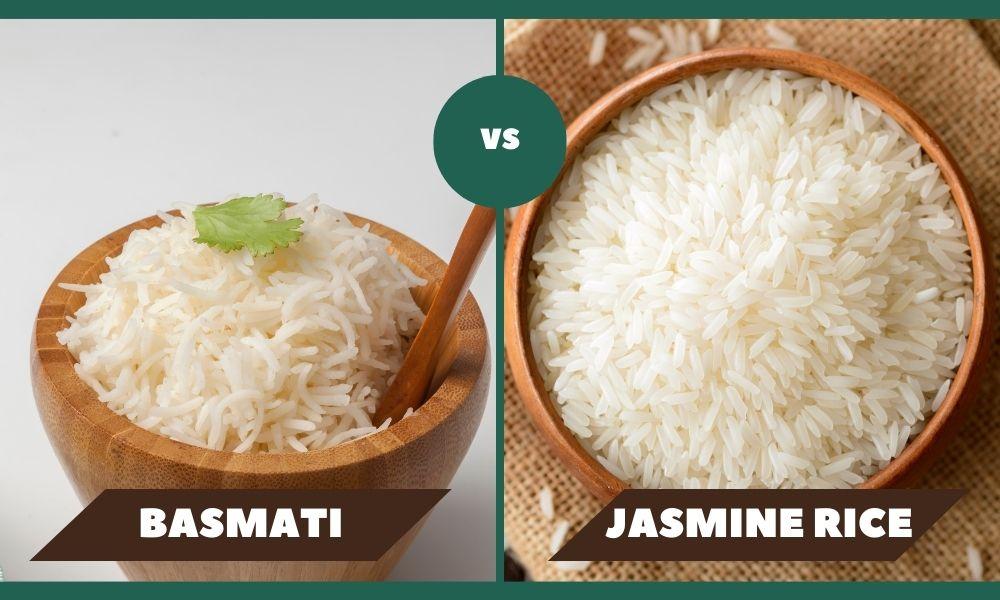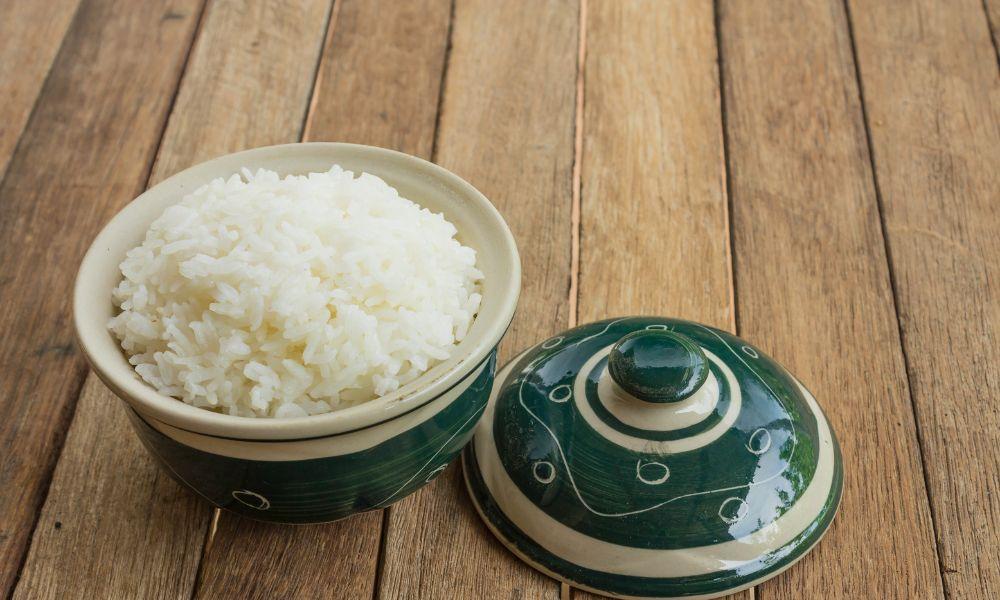As a culinary enthusiast, I’m always intrigued by the myriad of rice varieties used in cuisines worldwide. Today, we’re exploring two beloved long-grain types of rice – Basmati and Jasmine, celebrated for their unique aromas and flavors.

The Elegance of Basmati: A Nutty Aroma from the Himalayas
Originating from the Sanskrit word for “fragrant,” Basmati rice hails from the Indian subcontinent. Cultivated in the foothills of the Himalayas, Basmati stands out for its distinctive nutty and floral aroma.
During my time at the Boat Basin Cafe in Downtown New York, I was introduced to this type of rice. Its tempting aroma wafting from every dish piqued my interest. High-quality Basmati rice is identified by long, slightly tapered grains that elongate as they cook, resulting in a fluffy, aromatic, and flavorful offering.
| Jasmine Rice | Basmati Rice | |
|---|---|---|
| Origin | Thailand | Indian Subcontinent |
| Aroma | Plant-like; similar to Jasmine flower | Nutty and floral |
| Flavor | Slightly sweet | Subtle and nutty |
| Texture | Soft and slightly sticky | Fluffy and separate grains |
| Cooking Water-to-Rice Ratio | 1:1 | 2:1 |
| Requires Soaking Before Cooking | No | Yes |
| Best Used In | Thai cuisine, dishes with robust flavors, and stir-fries | Indian/Pakistani dishes, Pilau, and Biryani |
| Glycemic Index | Higher | Lower |
Cooking and Usage of Basmati Rice:
The secret to cooking the perfect Basmati lies in the techniques. Whether you’re boiling, steaming, or using a double boiler, never skip the rinse. Rinsing washes away any surface starch and prevents the grains from sticking together.
For optimal results, soak the rice in cold water for 30-60 minutes before cooking. This step hydrates the grains for an even cook and impressive elongation without breaking. Additionally, maintain a water-to-rice ratio of 2:1 to achieve the desired fluffy texture.
Culinary Uses of Basmati:
Basmati forms the backbone of many traditional dishes from the Indian subcontinent, including the fragrant pilau and the layered, spice-laden biryani. The ability of the grains to remain separate when cooked makes it an irreplaceable choice for these flavorful layered dishes.
Jasmine Rice: An Aromatic Delight from Southeast Asia

Contrary to Basmati, Jasmine rice is a native of Thailand. This aromatic long-grain rice, named after the fragrant jasmine flower, is renowned for a unique plant-like aroma and slightly sweet flavor. The grains are a bit shorter and stickier compared to Basmati.
As a fan of Thai curry, I find pairing the dish with Jasmine rice genuinely elevates the dining experience. The rice’s aroma complements the strong flavors of the curry, creating a sublime flavor harmony.
Cooking and Usage of Jasmine Rice:
Steaming is the preferred method of cooking Jasmine rice. When cooked at a 1:1 ratio of water to rice, you end up with slightly sticky grains with a soft yet chewy texture. However, like Basmati, Jasmine rice benefits from a good rinse before cooking to prevent grain clumping.
Culinary Uses of Jasmine:
Used in a variety of Southeast Asian dishes, you’ll find Jasmine rice in everything from savory fried rice dishes to sweet sticky rice desserts. Its subtle stickiness makes it perfect for dishes that require the grains to stick together, such as fried rice.
Differences Between Basmati and Jasmine Rice:
Despite being celebrated for their fragrant qualities, Basmati and Jasmine rice’s cooking methods and flavors vary significantly.
Basmati requires meticulous preparation – rinsing and soaking before cooking – and a higher water-to-rice ratio. On the other hand, Jasmine rice requires rinsing but usually doesn’t need to be soaked.
Flavorwise, Basmati carries a subtle, nutty flavor with a floral fragrance, while Jasmine rice is slightly sweet with a plant-like aroma. As for texture, Basmati grains are less sticky and remain distinct after cooking – ideal for dishes where grains need to remain separate. Conversely, Jasmine rice has a slightly chewy texture, and the grains stick together, making it perfect for stir-fries and dishes with robust flavors.
Nutritional Values of Basmati and Jasmine Rice:
When it comes to the nutritional aspect, both Basmati and Jasmine rice have similar caloric content. However, Basmati rice has a lower glycemic index compared to Jasmine rice, meaning it causes a slower rise in blood sugar levels. So, for those monitoring their blood sugar levels, Basmati might be a healthier choice.
Interchangeable Use and Substitution:
While both types of rice have unique properties, they can occasionally be used interchangeably, although this may slightly alter the original dish’s taste and texture. For example, a biryani made with Jasmine rice would yield a slightly stickier dish with a different but equally enjoyable flavor profile. Experimenting with culinary choices can be fun, so don’t hesitate to try something new in your kitchen. However, remember that replacing these types of rice may not necessarily yield the traditional flavor or texture associated with specific dishes.
FAQs
1. What is the difference between Jasmine and Basmati rice?
Both Jasmine and Basmati are types of long-grain rice, but they differ in aroma, flavor, and texture. Jasmine rice, originating from Thailand, has a sweet, slightly plant-like aroma and a stickier texture. Basmati rice, native to the Indian subcontinent, has a nutty and floral aroma with fluffy and separate grains when cooked.
2. How does the cooking method vary between Basmati and Jasmine rice?
Basmati rice requires rinsing and soaking before cooking, and it’s usually cooked at a higher water-to-rice ratio of 2:1. Jasmine rice, on the other hand, needs rinsing before cooking but usually doesn’t need soaking. It’s typically cooked at a 1:1 water-to-rice ratio.
3. Can you substitute Jasmine rice for Basmati rice and vice versa?
Although you can substitute one for another, keep in mind it will alter the dish’s texture and flavor. Jasmine rice is stickier and has a slightly sweet flavor, while Basmati rice has a more nuanced, nutty flavor with distinct and less sticky grains.
4. Which type of rice is healthier: Jasmine or Basmati?
Both types of rice have similar caloric contents. But Basmati rice has a lower glycemic index compared to Jasmine rice, meaning it causes a slower rise in blood sugar levels. Thus, for individuals monitoring their blood sugar levels, Basmati might be a better choice.
5. What cuisines traditionally use Jasmine and Basmati rice?
Jasmine rice is a staple in Southeast Asian dishes, particularly Thai cuisine, while Basmati rice is commonly used in Indian and Pakistani cuisines.
Conclusion:
Whether you’re planning a fragrant pilau, a spicy biryani, a comforting bowl of Thai curry, or a quick fried rice dish, understanding the different properties and culinary uses of Basmati and Jasmine rice can enhance your dining experience. So, dive into the world of these aromatic rice varieties and discover the flavors and textures that make each one unique. Remember, the joy of cooking lies in experimentation. You might just end up discovering your new favorite dish!






